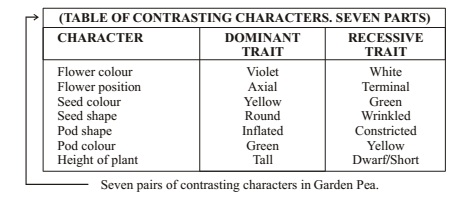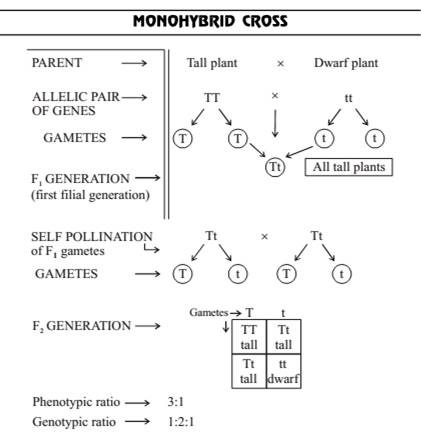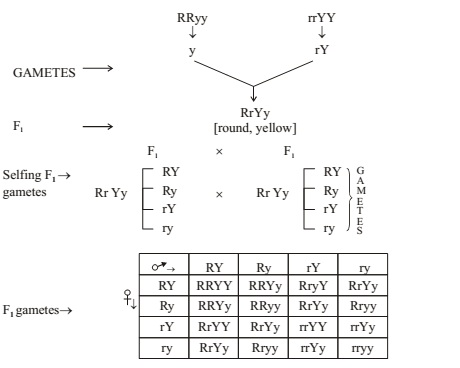
Heredity & Evolution: Terms
- Genetic: Branch of science that deals with Heredity and variation.
- Heredity: It means the transmission of features/ characters/ traits from one generation to the next generation.
- Variation: The differences among the individuals of a species/population are called variations. It takes place environmental changes, crossing over, and recombination of genes and mutation.
- Genotype: The complete set of genes in an organism’s genome is called genotype.
- Phenotype: The observable characters in an organism make the phenotype.
- Phenotype is a modified genotype and many of the phenotypes cannot be inherited.
- Clones are those organisms which are exact copies of each other.
Mendel and His Work on Inheritance
Gregor Johann Mendel (1822& 1884) : Started his experiments on plant breeding and hybridisation. He proposed the laws of inheritance in living organisms. Law of Dominance, Law of segregation, Law of Independent Assortment. Mendel also known as Father of Genetics
Plant selected by Mendel
Pisumsativum (garden pea). Mendel used a number of contrasting characters for garden pea.

Mendel’s Experiments
Mendel conducted a series of experiments inwhich he crossed the pollinated plants to study one character (at a time)
- Cross between two pea plants with one pair of contrasting characters is called a monohybridcross.
- Cross between a tall and a draft plant (short).

Phenotypic ratio : 3:1
Genotypic ratio : 1:2:1
Phenotype ® Physical appearance [Tall or Short]
Genotype ® Physical appearance [Tall or short]
Observations of Monohybrid Cross
- All F1 progeny were tall (no medium height plant (half way characteristic)
- F2 progeny ¼ were short, 3/4 were tall
- Phenotypic ratio F2 – 3 : 1 (3 tall : 1 short)
- Genotypic ratio F2 – 1:2:1
Conclusions
- TT and Tt both are tall plants while tt is a short plant.
- A single copy of T is enough to make the plant tall, while both copies have to be ‘t’ for the plant to be short.
- Characters/Traits like ‘T’ are called dominant trait (because it express itself) and ‘t’ are the recessive trait (because it remains suppressed)
- From these observation, Mendel put forward the rules of inheritance
- Law of Segregation: Every individual possesses a pair of alleles for a particular trait. During gamete formation, a gamete receives only one trait from the alleles. A particular trait can be dominant or recessive in a particular generation.
Dihybrid Cross
A cross between two plants having two pairs of contrasting characters is called dihybrid cross.

Phenotypic Ratio
Round, yellow : 9
Round, green : 3
Wrinkled, yellow : 3
Wrinkled, green : 1
Observations
- When RRyy was crossed with rrYY in F1 generation all were Rr Yy round and yellow seeds.
- Self-pollination of F plants gave parental phenotype and two mixtures (recombinants round yellow & wrinkled green) seeds plants in the ratio of 9:3:3:1
Conclusions
- Round and yellow seeds are DOMINANT characters
- Occurrence of new phenotypic combinations show that genes for round and yellow seeds are inherited independently of each other.
Law of Independent Assortment: Alleles of different characters separate independent from each other during gamete formation.
In the above example, alleles of texture were assorted independently from those of seed colour.

